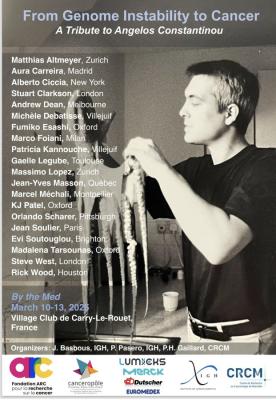The accurate repair of DNA double-strand breaks (DSBs) is crucial for genome integrity and is tightly regulated during the cell cycle. In mitosis, cells inactivate canonical DSB repair pathways in favor of a DSB tethering mechanism that clusters acentric chromosome fragments in close spatial proximity to ensure their segregation in one of the daughter cells. A complex composed of the adaptor TOPBP1 and the CIP2A protein is critically implicated in chromosome stability maintenance and chromosome fragment clustering during mitosis (1-4). In addition, in homologous recombination deficient (HRD) cancer cells, the CIP2A-TOPBP1 complex prevents lethal mis-segregation of acentric chromosomes that arises from impaired DNA replication. Hence, CIP2A is an essential gene in HRD cells and may constitute a new drug target in BRCA-mutated cancers (2). Yet, the mechanism by which CIP2A-TOPBP1 tethers acentric fragments in mitosis remains elusive.
I will summarize our most recent findings, which provide new insights in CIP2A-TOPBP1 complex architecture and recruitment mechanism to sites of mitotic DNA breaks by MDC1. Our model posits that CIP2A mediates TOPBP1 dimerization through its C-terminal parallel coiled-coil, which is essential for its recruitment by MDC1. Interestingly, to efficiently recruit CIP2A-TOPBP1 dimers, MDC1 must dimerize as well, via a mechanism involving its FHA domain and ATM-dependent phosphorylation (5). MDC1-CIP2A-TOPBP1 dimers may thus act as molecular “Velcro”, which physically ties acentric fragments to the rest of the chromosome mass to prevent their mis-segregation.



